Are you looking for a sign? Then come to Singapore, we’ve got them all over the place.
That’s what my friend Will said when I asked him what he noticed about Singapore during his first-ever visit a few months back. Signs all over the place. Not heartening multiculturalism or exotic wildlife or uncanny cleanliness, no. Signs all over the place.
And he’s not the only one. John Cleese happened to be on tour in Singapore a few weeks later, and he drew a similar conclusion.
Snort! Good one John. But is it true? Are Singapore’s signs so poor? And are they really all over the place?
Take the example above, warning of falling durian fruit. The message is straightforward, albeit pretty redundant. Normally you smell durian before you see it, but unless you happen to be wearing a hard hat, there’s not much evasive action you can take if they’re plummeting out of trees.
Still, I prefer to know when I’m at risk from killer fruit, even if there’s little I can do about it. The same goes for entering a cemetery that might contain bees, snakes and funky dancing.
These signs all warn you from danger, but perhaps the more notorious examples concern individual behaviour, such as the ‘don’t touch, don’t fight, don’t steal’ sign pictured at the top. I saw that particular one on Sentosa, Singapore’s party island.
I had taken Will there for a day of hedonism and debauchery. It would be just like when we lived together in London in our 20s, blagging our way into art gallery launches to drink free beers, then squeezing in to Polpo for small plates of fritto misto, before ending up at Madame JoJos to dance to classic funk and soul, most probably looking like we were falling over in a cemetery.
Best night ever.
We went to +Twelve, described as Singapore’s only adult-oriented beach club. It advertises elevated vibes and smooth beats, which is perfect for me because if there’s one thing I love it’s for my vibes to be elevated.
It also has HydroDash, an inflatable obstacle course floating on the sea, which looks like Gladiators but with added drowning, and was perfect for Will because that was apparently the thing he most wanted to do in the entire world.
But HydroDash turned out to be closed after Singapore’s 2024 oil spill, so we went to the infinity pool instead. This was soundtracked by thunderous RnB music. As beats go, they were smooth I suppose. Smooth and absolutely deafening. It was far too loud to talk to each other, so we took a dip in the infinity pool. When you swam up the edge, it overlooked the recycling bins. I ordered a mocktail made from peaches that tasted like tinned fruit syrup, we shared a plate of chips and then gave up and went to play mini-golf instead.
Will would insist that the record shows he won the game.
Best day ever.
Anyway, throughout our day in Sentosa, we managed to avoid touching, fighting or stealing, unless you count Will stealing victory from me with improvised rules about penalty shots for going out of bounds.
But let’s get back to the point. The point is that I would’ve won the game if it wasn’t for those stupid penalties. The other point is that okay yes, Singapore has signs all over the place. Some of them give warnings that are arguably redundant whereas others exhort the population to behave in a certain way.
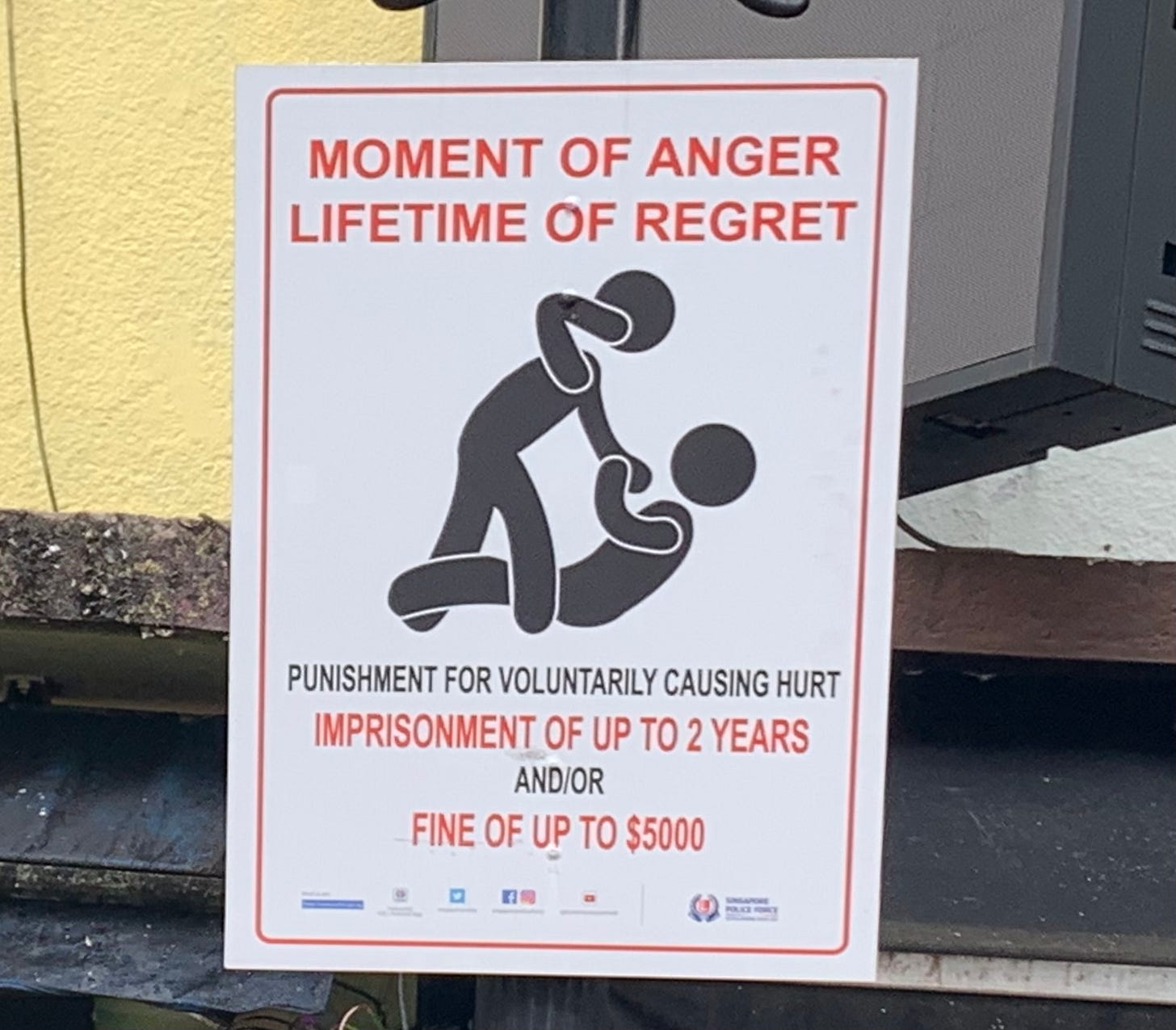
Even MRT staff carry signs, enforcing the no eating and no drinking rule on underground stations and platforms.
They may be all over the place, but the many signs of Singapore evidently work. Constant reminders of severe punishments clearly have the desired effect, because any kind of rule-breaking is incredibly rare here.
Even when those rules are made up half-way through the game.




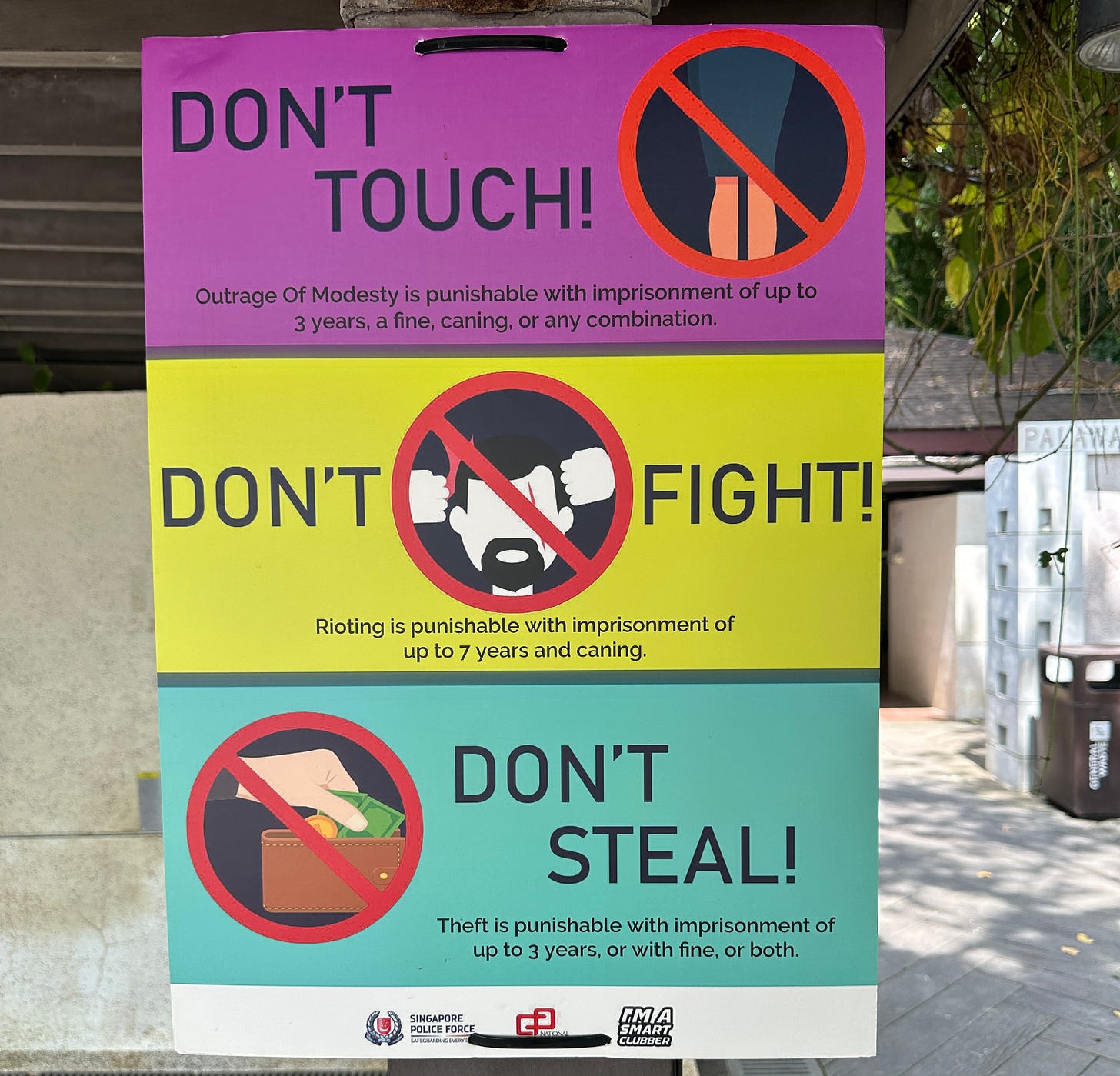
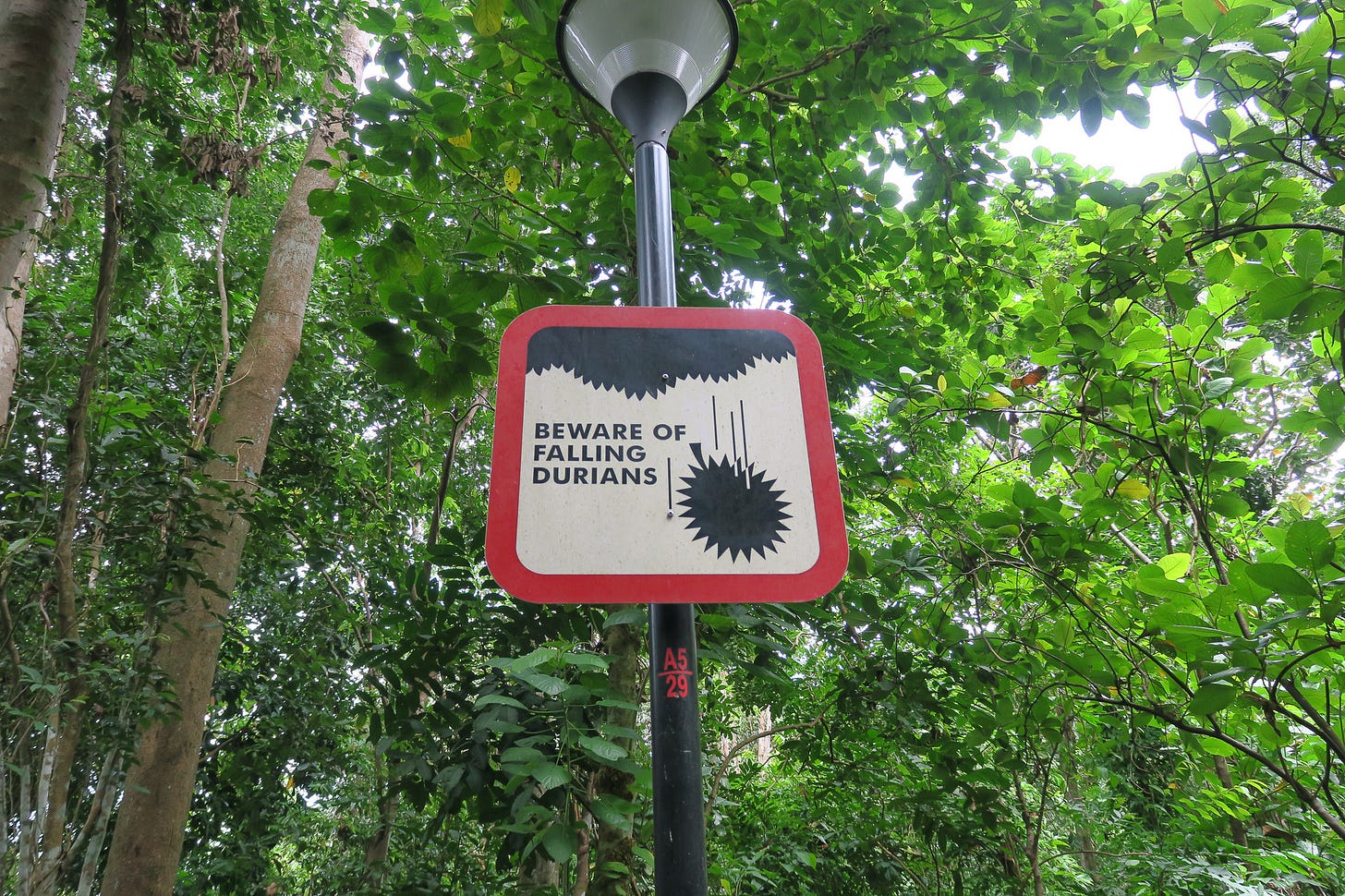
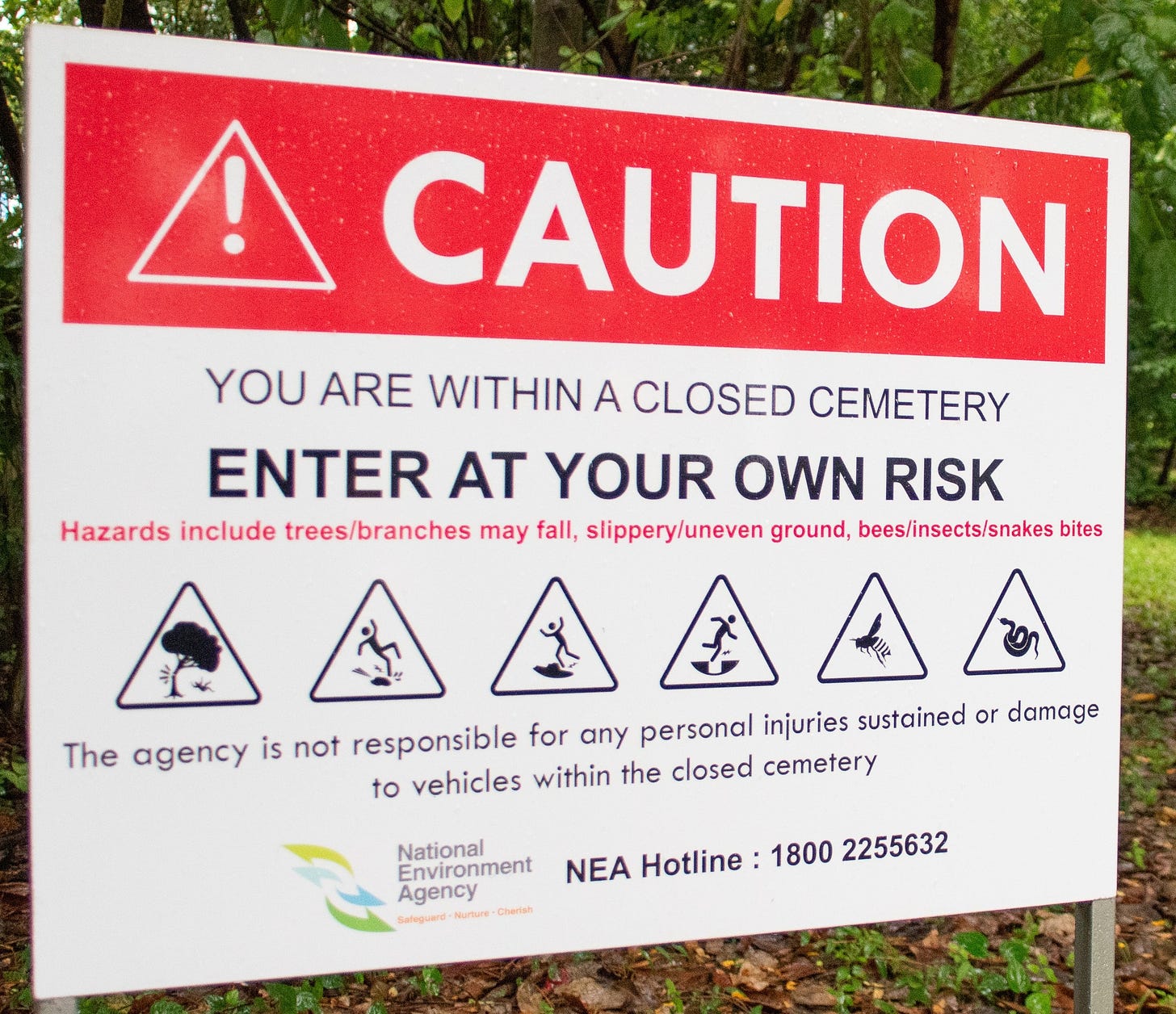

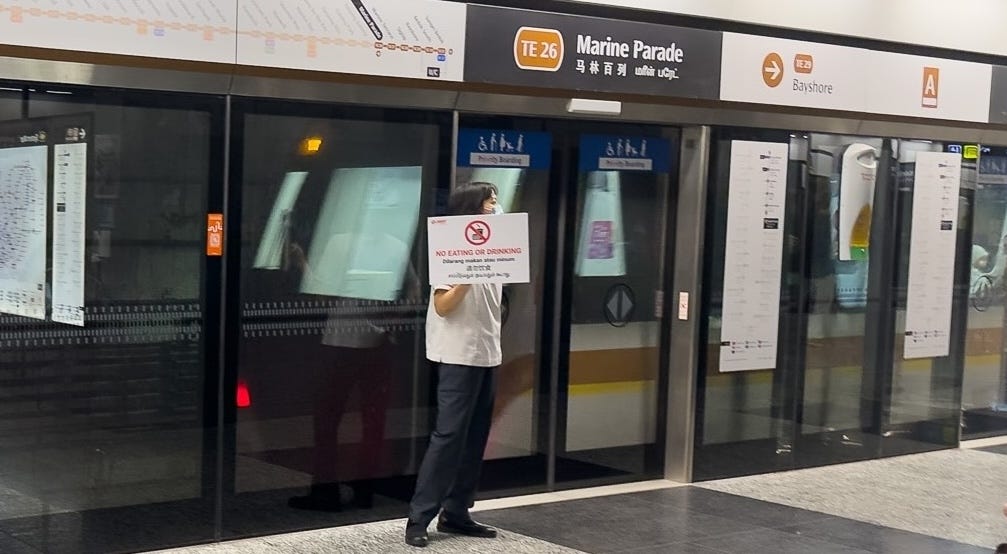
After a year in Singapore I went on holiday elsewhere and was thoroughly confused by the lack of safety signs on the escalators. I had grown to believe that every escalator must have details instructions on its use and its dangers plastered from top to bottom. It was really disorienting.
Question is - why are Singaporeans so obedient to signs??